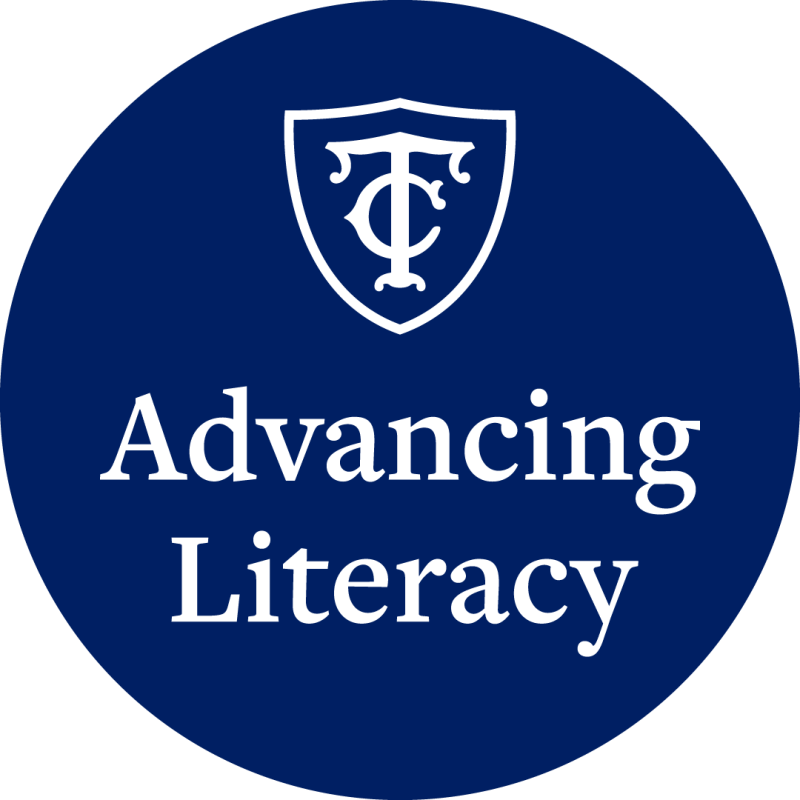Launching Our Vocabulary Series: Key Components of Effective Vocabulary Instruction
Published Friday, October 18, 2024

Advancing Literacy
At Teachers College Advancing Literacy we’re often engaged in study groups around specific topics with our partner schools and vocabulary instruction is regularly an in-demand topic. We’ve been working with teachers and schools devoted to building up culturally responsive practices around research-based vocabulary instruction that affirms and empowers all students. This post is the first in our vocabulary series and over the next four posts we’ll be sharing a bit of that learning with you.
What makes vocabulary instruction so important?
If you’re fascinated by words like we are, vocabulary instruction is already appealing to you. However, it’s also a truly vital skill set that children need to build and develop in order to experience success in school, literacy and life. Vocabulary refers to all the words that students know and use to learn and communicate effectively. All students enter school equipped with a range of language practices, experiences, and vocabularies that are important to access (Moll et. al 1992).
As practitioners of culturally responsive teaching, we must also consider the ways in which our vocabulary instruction can put students’ linguistic identities at the center of instruction while providing a robust and equitable experience for all. As with all instruction, vocabulary learning will be most powerful when it begins with students’ preexisting knowledge (Cardenas-Hagan 2020). Throughout instruction we must work to deliberately convey that all language practices and knowledge is valuable, not just traditionally valued “academic vocabulary” or ways of speaking and writing.
Vocabulary is what SG Paris (2005) classified as an “unconstrained skill,” meaning that it is a skill that is developed lifelong and is never fully mastered. Research tells us that vocabulary knowledge is a strong indicator of overall academic performance (Stahl & Fairbanks 1986) as well as of reading comprehension (August, Carlo, Dressler & Snow, 2005; Baumann, 2009; Chall, Jacobs, & Baldwin, 1990; Cunningham & Stanovich, 1997, Mancilla-Martinez & Lesaux, 2010). Additionally, vocabulary instruction can be a powerful venue for affirming and expanding on students’ preexisting language practices and knowledge.
What are the components of effective vocabulary teaching?
Vocabulary is the cornerstone of language mastery, and research shows that a strategic, culturally responsive approach to teaching it can make all the difference. Michael Graves (2000) identified four essential components of effective vocabulary instruction, which we can enhance through culturally responsive practices:
Providing rich and varied language experiences
Teaching individual words
Teaching word learning strategies
Developing word consciousness
While implementing these four components, it’s crucial to recognize that vocabulary learning is deeply connected to children’s cultural and linguistic backgrounds. Effective, culturally responsive vocabulary instruction must also:
Acknowledge and build on students’ existing linguistic knowledge, including knowledge of other languages.
Recognize that concepts and terms may be known to students in their home language.
View multilingualism as an asset, not a deficit.
Deliberately create opportunities for children to discuss and build understanding of new words using their full linguistic repertoire.
Take place in a larger classroom community where all languages and cultures are seen and valued.
.
Vocabulary learning is lifelong, and having a robust, culturally responsive instructional program built on these principles will empower students to continuously expand their word knowledge—beyond their school years. Over several upcoming blog posts, we’ll dig into each of Graves’ principles, providing practical ways to weave culturally responsive teaching into your vocabulary work as well as real-world ideas and examples of implementation.
This post is the beginning of our Vocabulary Instruction Series. Stay tuned for deep dives into the other three pillars of effective vocabulary teaching.
References
August, Diane, et al. “The Critical Role of Vocabulary Development for English Language Learners.” Learning Disabilities Research and Practice, vol. 20, no. 1, 2005, pp. 50–57, https://doi.org/10.1111/j.1540-5826.2005.00120.x.
Baumann, James F. “Intensity in Vocabulary Instruction and Effects on Reading Comprehension.” Topics in Language Disorders, vol. 29, no. 4, 2009, pp. 312–28, https://doi.org/10.1097/TLD.0b013e3181c29e22.
Cárdenas Hagan, Elsa, editor. Literacy Foundations for English Learners: A Comprehensive Guide to Evidence-Based Instruction. Paul H. Brookes Publishing Co, 2020.
Chall, Jeanne Sternlicht, et al. The Reading Crisis: Why Poor Children Fall Behind. Harvard University Press, 1990, https://doi.org/10.4159/9780674029354.
Cunningham, Anne E., and Keith E. Stanovich. “Early Reading Acquisition and Its Relation to Reading Experience and Ability 10 Years Later.” Developmental Psychology, vol. 33, no. 6, 1997, pp. 934–45, https://doi.org/10.1037/0012-1649.33.6.934.
Graves, M. F. (2000). A Vocabulary Program to Complement and Bolster a Middle-Grade Comprehension
Program. In B. M. Taylor, M. F. Graves, & P. Van Den Broek (Eds.), Reading for Meaning: Fostering Comprehension in the Middle Grades (pp. 116-135). New York: Teachers College Press.
Mancilla-Martinez, Jeannette, and Nonie K. Lesaux. “Predictors of Reading Comprehension for Struggling Readers: The Case of Spanish-Speaking Language Minority Learners.” Journal of Educational Psychology, vol. 102, no. 3, 2010, pp. 701–11, https://doi.org/10.1037/a0019135.
Moll, Luis C., et al. “Funds of Knowledge for Teaching: Using a Qualitative Approach to Connect Homes and Classrooms.” Theory Into Practice, vol. 31, no. 2, 1992, pp. 132–41, https://doi.org/10.1080/00405849209543534.
Paris, Scott G. “Reinterpreting the Development of Reading Skills.” Reading Research Quarterly, vol. 40, no. 2, Apr. 2005, pp. 184–202, https://doi.org/10.1598/RRQ.40.2.3.
Stahl, Steven A., and Marilyn M. Fairbanks. “The Effects of Vocabulary Instruction: A Model-Based Meta-Analysis.” Review of Educational Research, vol. 56, no. 1, 1986, p. 72, https://doi.org/10.2307/1170287.